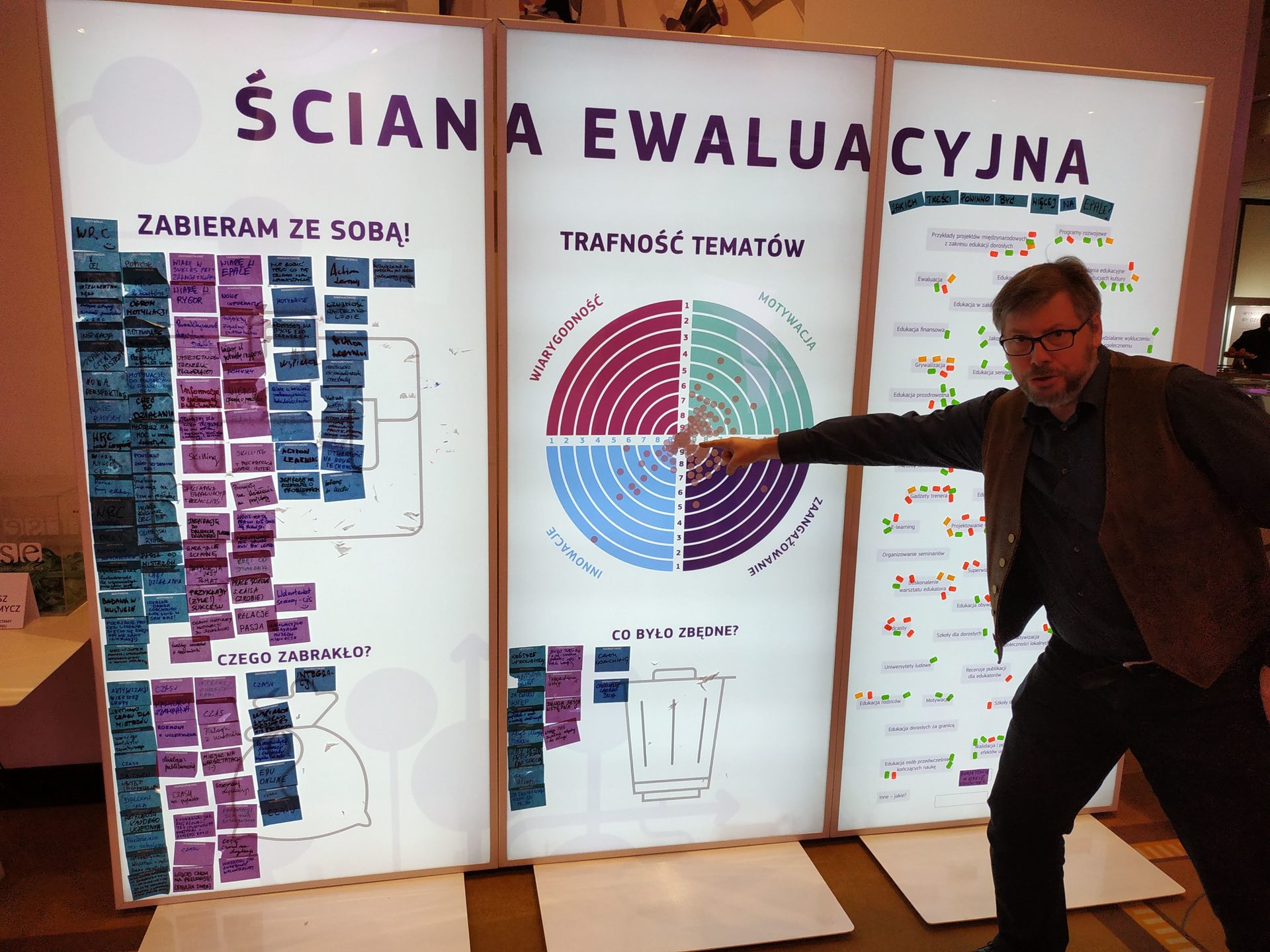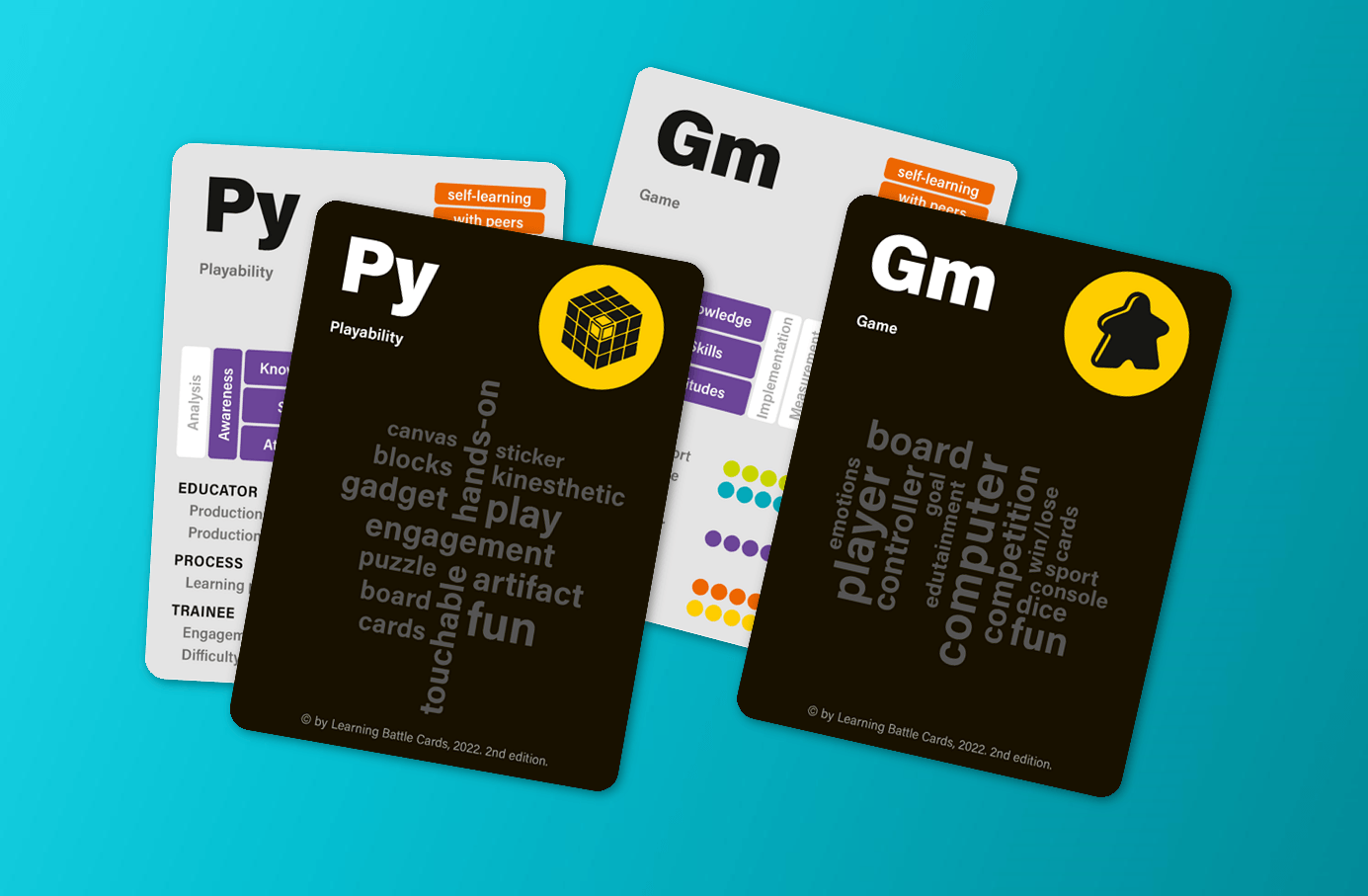Why Playability Is Not Gamification
There is no learning without learner engagement. There are many reasons people get engaged, and some of them can be attributed to the concept of playability. You may be surprised by just how strong it can be. The power of fun is often underestimated. Let me show you the concept itself and some examples of using it.
There is a multitude of playability in learning. The first things that probably come to your mind are programs such as Kahoot or Mentimeter, which are commonly used during conferences and L&D processes and allow to engage the audience in the creation of a tag cloud or a poll. The easy and comfortable use of smartphones makes this experience fun. Audience engagement tools completely change the dynamic of the lecture.
Another practice that can be used as an example could be describing financial topics with the help of Lego bricks. People love to build with Lego blocks; they learn to follow financial rules in the building process, where single blocks of each color have a well-defined meaning.
Paper canvas filled with post-it notes can also be seen, for example in the process of design thinking. One of the examples of this that impressed me is the evaluation wall which I came in contact with at one of the EPALE conferences. Usually, it is hard to convince the participants of an event to fill out evaluation forms. We do not have time to fill out surveys and most people are just in a hurry after a conference. We fill out the survey, but we basically almost never see the results of this effort except for a filled piece of paper.
At this specific conference, however, many people enthusiastically shared their opinions about it. This was thanks to the evaluation wall, which basically took the form of a giant infographic filled out by the participants of the event in real time. New colorful stickers constantly appeared and were sorted into infographic form. The conference’s participants saw how their opinions were saved in real time. Giving feedback became a sort of game. Fun can lead to quite serious results. Attaching those stickers in effect gave a very solid evaluation of the L&D process.

Image 1: Evaluation Wall at EPALE conference, with Mr. Tomasz Kuc
Playability Vs. Gamification
These concepts are similar, but it is worth seeing the differences for their effective application. Gamification is more about the challenge, competition, and win-or-lose situations. There is some pressure behind it and a lot of emotions. It is a very powerful learning tool and there are a lot of examples of gamification you can probably find in education. Playability is based on our natural attraction to fun, and to things that make having fun possible. We like artifacts such as cards, stickers, blocks, magnets, canvas, etc. Their attractive form encourages us to have fun, even though the results of that fun can be quite varied. This also makes us feel a lot of emotions, although different ones than the ones caused by playing a game. In the new edition of the Learning Battle Cards (LBC), the goal of which tool is to the support the people who design L&D processes and learning in general, you will find both a game and a playability card.

Image 2: Learning Battle Cards
By the way, the Learning Battle Cards method and tools are a good example of the playability tool. While we are talking about Learning Battle Cards, one of the questions we often face is what is the game behind the card deck. If I had to compare it to any kind of game, it would be a cooperative game. It is not about winning against the other players, but working with them to create an interesting, effective, and engaging L&D project.
Attraction At First Sight
The power of playability tools is first and foremost attractiveness. It is hard to resist the pleasure of having fun. A while ago our team was invited to an opening of a big education center, where it was decided that a great attraction would be the exposition of innovative solutions in the L&D sector. A few open teaching rooms, and in every one of them some kind of an innovative solution. However, most of the solutions were presented on screens through PowerPoint presentations. The attendants had a greater tendency to head toward the halls with scattered cards and maps. In the pile of presentations, their attention was taken by cards, maps, and boards, even though they did not even know what they were for yet.
Getting attention is one of the huge strengths of playability. That, obviously, has to be paired with sensible use [1]. Playability moves the elephant—or the childlike want for fun—very strongly, but that has to be followed by some value for the rider.
Form Is Key
One can fall under the impression that playability is the use of attractive artifacts in order to realize teaching goals. However, it is good to know that the selection of the form should not be random.
Take a microphone for example. The form itself makes the activity of giving the microphone to the next person much easier and more attractive. The form of a sponge cube makes the throwing and catching of the microphone safe and enjoyable. The form of Learning Battle Cards is also not random. It is very consistent with the message carried by the method behind it. The form of the cards was selected meticulously.
The main message of the Learning Battle Cards method is that the modern educator can use multiple methods and in their number, there is a potential to face challenges in the L&D process. That is why there are 110 cards; scattering them and then collecting them again takes quite a while.
It is hard to say which methods are objectively better or worse; however, some of them may fit with some needs better thanks to their characteristics. That is where the infographic part of the card with the parameters of the method comes from. The form of playing cards allows for the division of the deck into parts, for example, by choosing cards that are optimal for a specific project.
It is good to defy routine in the creation of new L&D processes. The cards allow you to search for inspiration through shuffling, picking, and arranging them (sometimes a few cards put together can make a new inspiration). Designing development processes is based on a meticulous selection of cards in relation to the needs of the project.
Cards were not the first idea. The form of a periodic table of elements was also considered. That kind of design would look good, however, it would be much less suited to the performance of necessary actions. It is more visual than kinesthetic, and having fun usually involves a lot of action. If you decide to use the power of playability it is worth considering different forms and choosing one that is consistent with the learning message. Cards do not have to be the best choice. Also, think about what people will be doing with it and make it as easy as possible.
A Simple Form Does Not Mean Simple Content
There are a lot of simple tools in the playability family, which do not seem hard to prepare. They can, for example, be cards that have interesting openings to a business conversation on them. Playability does not have to mean that something is infantile or simple. You could say that simplicity is not simple to design. Something that is simple, fun, and valuable for the users at the same time may take a lot of work.
That is the case with the Learning Battle Cards. Behind the innocuous cards, there is a great amount of work on their content. First of all, the LBC cards have their own parameters which were defined by the team of the method’s authors, but their values come from a crowdsourcing project in which multiple practitioners of modern education are engaged. The data which was collected and averaged is a big value of the cards.
The QR code introduced in the second edition contains references to electronic content, which are going to be in constant development, so that with time they are something of a knowledge base of practical knowledge in modern teaching. The composition of the second edition of Learning Battle Cards is also the product of crowdsourced work with multiple contributors.
If you want to give real value in a format of playability, think about how to encode the knowledge in the form you are designing. You can use simple text, parameters, connections, and whatever you can imagine as the best form of simple information encoding.
The Play
A lot of playability tools allow for a multitude of games, that bring value tied to the use of that tool. After all, after interesting the elephant you have to give rider-specific benefits. The value of a tool is defined by how much you can accomplish with it. In Learning Battle Cards there is a multitude of activities that are designed for specific goals from inspiration, building your own learning method toolbox, selection of methods for specific needs, to designing whole L&D processes.
Playability tools should be designed in a way where their use brings a lot of different benefits to your audience. Get inspired by the concept of playability as well as other methods. Engage in them consciously, because without engagement there is no teaching.
References:
[1] Heath, Chip and Dan Heath. Switch: How to Change Things When Change is Hard. New York: Crown, 2010.
Image Credits:
The images have been created and supplied by the author.



















